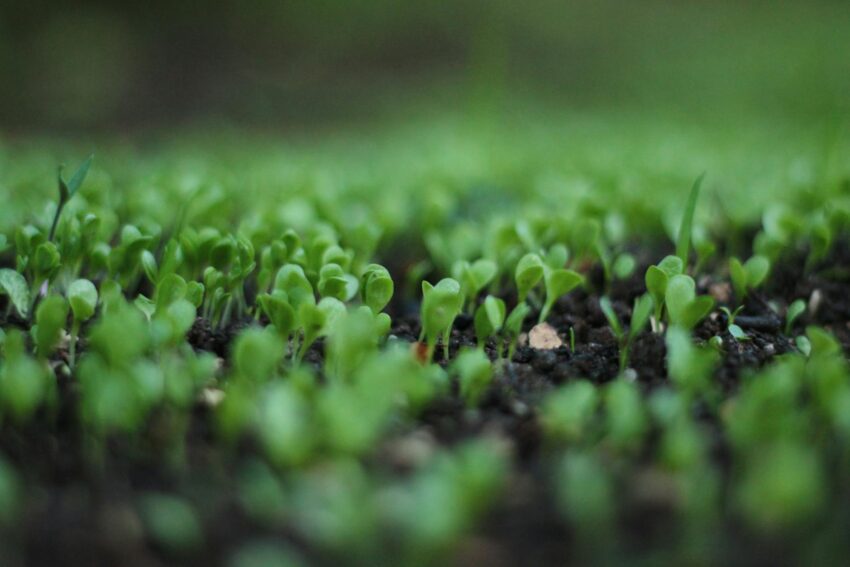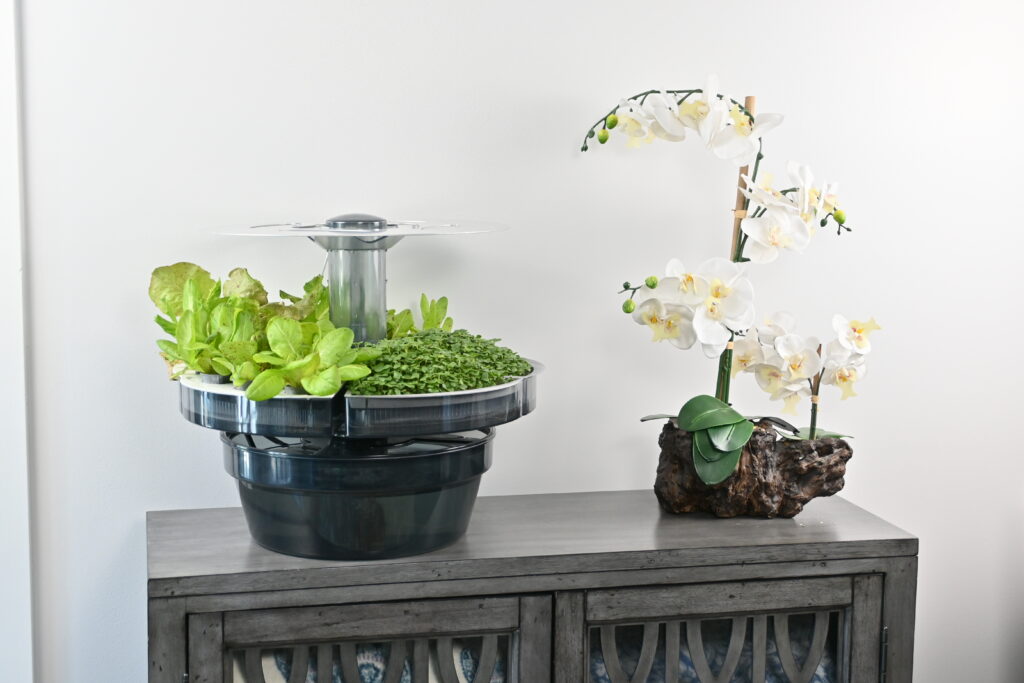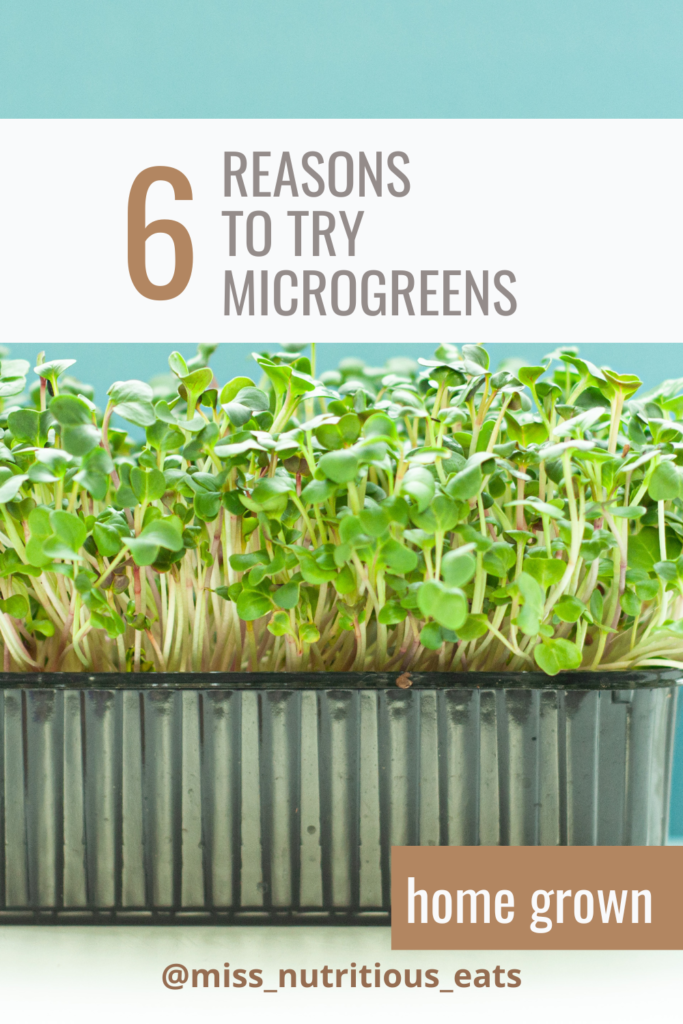Microgreens: nutrition, health benefits + growing tips

If you’re into health, you’ve probably noticed micro greens popping up on local menus. These tiny greens pack a big nutritional punch in preventing chronic disease and they have even bigger flavor. They’re loaded with nutrients, making them a perfect superfood to toss into salads, blend in smoothies, or add to just about anything. If you’re curious about why you should add micro greens to your diet or growing them at home, I’ve got you covered with their health benefits, nutritional content, and some easy tips for cultivating these nutrient-packed greens yourself.
This blog contains affiliate links from which I may receive commission.
Table of contents
What Are Microgreens?

Micro greens are basically baby veggies or herbs, picked right after their first true leaves pop up. They’re often called “vegetable confetti” because of their bright colors and bold flavors. You can find all sorts of micro greens, from cruciferous ones like kale and broccoli to leafy greens and herbs like cilantro and basil. They’re tiny but mighty, often boasting more nutrients than their fully-grown versions!
Nutrition and Health Benefits
Micro greens are packed with antioxidants and can have 4 to 40 times more nutrients than mature plants. They’re a powerhouse of essential nutrients and vitamins, like vitamins C, E, and K.
- Calories: 10-25 calories
- Protein: 1-3 grams
- Fiber: 1-2 grams
- Vitamin C: 20-40% of the daily value
- Vitamin A: 10-30% of the daily value
- Iron: 4-10% of the daily value
Top 6 Health Reasons to choose micro greens:
1. Rich in Nutrients
Micro greens deliver a burst of flavor compared to their mature counterparts. They also deliver essential vitamins and minerals, including vitamin K for blood clotting and bone health, vitamin C to support the immune system, and vitamin E for its antioxidant properties that combat free radicals and oxidative stress.
2. Combat Chronic Diseases
Being an antioxidant-rich food, microgreens play a crucial role in minimizing the risk of chronic diseases. Their bioactive compounds and dietary fiber help reduce oxidative stress, improve cardiovascular health, and prevent conditions stemmed from inflammation.
3. Support Metabolic Health
Micro greens, like broccoli micro greens and red cabbage micro greens, have been shown to help manage Type 2 diabetes by improving insulin sensitivity. Animal studies have demonstrated that these tiny greens can aid in maintaining lower levels of glucose in the blood.
Join my next 6 week challenge!
Tired of endless diets and no results? Join the FASTer Way to Fat Loss and see real, sustainable changes in just 6 weeks!

4. Cognitive Benefits
With polyphenols playing a significant role, micro greens offer benefits toward brain health. These nutrients may potentially aid in improving cognition and delaying Alzheimer’s disease and other neurodegenerative conditions.
5. Eye Health
Lutein, found in micro greens like spinach and broccoli sprouts, is known to aid in the prevention of age-related macular disease, contributing to overall eye health.
6. Boost Iron Levels
For those with iron deficiency, fenugreek micro greens offer high levels of this essential mineral, thus reducing the risk of anemia.

Growing Tips for Home Gardeners
Growing your own micro greens can be a cost-effective and rewarding way to incorporate these baby greens into your diet.
Here’s how to get started:
Step-by-Step Guide
- Choose a Growing Medium
Begin with a shallow container with drainage holes, a warm, sunny windowsill (preferably south-facing), and some potting mix or a growing medium.
- Scatter and Sow Seeds
Evenly scatter your chosen seeds—whether lettuce micro greens, swiss chard, or radish micro greens—across the soil’s surface, pressing gently.
- Watering and Maintenance
Lightly cover seeds with soil and use a mister to dampen the surface. Ensure to water daily with a mister to keep the soil moist but not wet. Once sprouted (usually within 3-7 days), continue to provide about four hours of direct sunlight daily or use a grow light if needed.
- Harvest and Enjoy
Once the greens have reached one to three inches in height, they’re ready to harvest. Snip them off just above the soil level, rinse thoroughly, and enjoy!
One of the main reasons that I started growing microgreens is for their intense flavor. Plus they tend to elevate anything you add them too. While, you can grow them at home with traditional trays and a watering schedule, I really love how easy it is to grow them in my Aquatree Hydroponic Garden. I will share more on this in another post, but basically it’s a tabletop garden that allows me to grow different types of microgreens in a foolproof and “set it and forget it” kind of way. No dirt, no puddles, and all the leafy vegetables you could want 😉
Key Considerations
- Always ensure clean containers and fresh seeds to minimize the risk of contamination with factors such as E. coli.
- Experiment with different flavors by trying a wide variety of microgreens to find the combination that best suits your palate.
- Always balance micro greens with a diet rich in other foods like mature vegetables, whole grains, and lean proteins to ensure you meet the recommended daily intake of all essential nutrients and vitamins.
Wish you could have someone just tell you what to reach your health goals?

